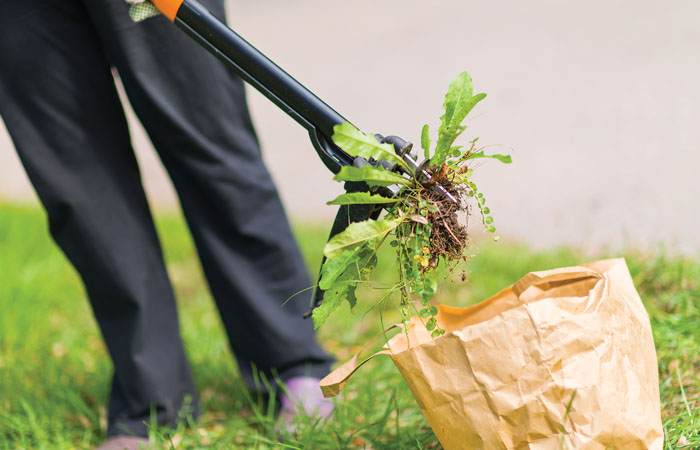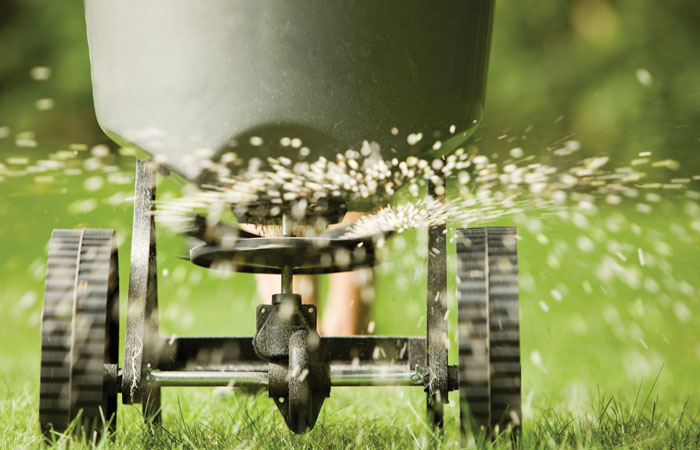Welcome avid golfers to the April installment of Ask the Superintendent. If you have followed our column for any length of time, you are aware of the many environmental strengths that golf courses have, especially in urban settings. April has always been a special month for golfers, but since 1970 it’s even more special as we have celebrated Earth Day on April 22nd every year. It is a time to reflect of how we can all become better environmental stewards and sustainability champions, golfers and non-golfers, alike. Caring for the planet is one thing that brings people of all walks of life together.
Which brings me to this month’s Ask the Superintendent question. Can a great golf course also be a great green space? The short answer is yes, and now let me explain some of the terms, data and organizations that help keep golf green and maximize the symbiotic relationships between great green spaces and great golf courses.
Golf is Green
(always has been, always will be)
Since the earliest days of golf, the game has thrived in harmony with the green space upon which it is played. When golf transitioned into a business opportunity, it became even more linked to limited inputs and using resources wisely. There sometimes is an old stereotype of golf not embracing the mantle of environmental stewardship. But if you look deeper into the science, the data and the ability of golf to co-exist within a wonderful green space is apparent.
Golf also brings economic viability, especially in urban settings. Places like Pebble Beach and Pinehurst, for example, are some of the best greenspaces in the world that just happen to be amazing golf courses that host some of the most memorable events in the game. This is no accident it is the result of tireless planning, execution and teamwork.

My home course, TPC Four Seasons Golf and Sports Club Dallas at Las Colinas, is a past world champion in the Environmental Leaders in Golf contest sponsored by Golf Digest magazine and the Golf Course Superintendents Association of America (GCSAA), winning the National Private Course and Overall awards in 2017 while we also hosted the 2017 AT&T Byron Nelson Tournament for the PGA TOUR. We are also celebrating our 10th anniversary of being and maintaining our status as an Audubon International Certified Cooperative Sanctuary for Golf Courses. In fact, members and guests noticed over 150 varieties of plants and wildlife during our last Bio-Blitz event (organized by Audubon International to help courses identify and track habitat). The species ranged from Bluebirds (Sialia sialis) to Snapping Turtles (Chelydra serpintina) and from Blue Bells (Hyacinthoides non-scripta) to Vitex or Texas Lilac (Vitex angus castus). How many plants and wildlife call your golf course home and are integrated into the natural process of the property?
Your golf course superintendent not only is the keeper of golf’s green traditions, but they are highly trained environmental and financial stewards that conduct the natural orchestra of the property. Your golf course superintendent is charged with protecting the delicate balances of Mother Nature, but he/she has the support of some amazing organizations. Let’s look at some of the green partners and evaluators available to your course and superintendent.
The Guardians of Environmental Stewardship in Golf
There are many organizations that support and encourage environmental stewardship in golf courses. Some of the most influential of these third-party green guardians include Audubon International, Golf Environmental Organization (GEO) and the Groundwater Foundation. These organizations are beyond the traditional organizations of golf, such as the PGA, LPGA, USGA, CMAA, GCSAA, etc. which all have programs to promote environmental stewardship within their own organizations.
These green-minded organizations work with golf courses (and other green spaces) to craft environmental plans, record and analyze data, share case studies and relevant information and, in some cases, earn various certifications and awards for verified exceptional environmental stewardship. They help keep the green industry green! Here is quick overview.
Audubon International (AI) – founded in 1987 and supported by the United States Golf Association (the USGA has donated over $2,000,000 to support the Audubon International Cooperative Sanctuary Program for Golf Courses). AI has enrolled over 4,000 properties in its golf, recreation and hospitality certification programs. For more details about programs and the requirements and levels of certification, go to www.auduboninternational.org.
Golf Environment Organization, or GEO as it is known to golf course superintendents, is headquartered in North Berwick, United Kingdom, and is an international environmental non-profit working to improve the level of sustainability of golf courses. The organization has a variety of services and programs, most noted in its OnCourse computer program that provides a base to track all your environmental efforts. The OnCourse program helps a course ultimately earn GEO certification. More information can be found at www.GEO.org. Beyond the GEO certification program, GEO provides tools and resources covering operations, golf events and course development.

The Groundwater Foundation provides public recognition for stewardship and protection of groundwater and the environment for highly managed green spaces such as golf courses, ball fields, parks and campuses. The Groundwater Foundation’s Ground Water Guardian Green Site program is available to golf courses. Through the program, golf courses will measure and document groundwater-friendly practices. To be designated as a Groundwater Guardian Green Site, you must apply and earn at least 70% of total points based on current best management practices related to pesticide and fertilizer use, water use, managing sources of pollution, protecting water quality and environmental stewardship. More information is available at www.groundwater.org.
The main takeaway here is that there are many organizations that can help your golf course become better environmental stewards and be recognized nationally and internationally for its efforts. Ask your superintendent for details of the environmental programs and certification held on your course.
What all this means to you
Golf is a game tied directly to the green space that it is played upon, and it takes all of us working together to keep the green space and the game thriving. If you love the game and your course, get involved in the support of the environmental programs at your club. Your golf course superintendent is the person who directs and implements all the environmental and agronomic programs for the course, and they need your support and involvement. It is easier for your superintendent to raise the level of stewardship if he or she has the support of the membership and/or other stakeholders.
I have been a golf course manager for 36 years and have earned environmental certifications and awards for every property I have served (private, resort and public clubs), and believe me when I say golfer awareness and support for environmental programs are key to success. This Earth Day decide to make your game a little greener this year and support the environmental efforts of your course. Here are the three best ways to accomplish this.
Contact your course superintendent and ask about current and planned environmental programs.
Tell all your golf buddies (and anyone else, for that matter) about the great environmental work that is going on at your course.
Volunteer some time for a green cause, either on the course or in the community.
Happy Earth Day, avid golfers, from all of us who keep our beloved game green.
Anthony L. Williams, MG, CGCS, CGM is the Director of Golf and Landscape Operations at the TPC Four Seasons Golf and Sports Club Dallas at Las Colinas, he is an award-winning environmental author with a degree in horticulture. Anthony can be reached at anthony.williams@fourseasons.com.